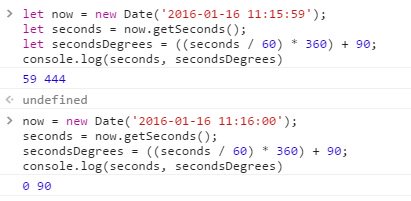On Jan 15th, 2017 I posted this tweet metioning that if anyone needed any help with any logic or if anyone had any query regarding @WesBos's #JavaScript30 challenges, please let me know about it. As I really wanted to help the community and learn something new in the process.
Here are the few queries and my solution/responses:-
- Tweet Link: https://twitter.com/RileyJD91/status/820670869953449985
- Query: where did you find this ? I'd really like to try this out
- Response:
- Here is the course: https://javascript30.com/ Github: https://github.com/wesbos/JavaScript30 Enjoy!
- He also had a confusion between Java & Javascript. So, I had also shared a Stackoverflow link with him.
- Tweet Link: https://twitter.com/ubilliards/status/820943157713977344
- Query: I am really trying to get the #02 css clock, not to wind back. it does that janky thing when seconds hit 59.
- Response:
- You can easily resolve this issue by not resetting but incrementing secondsDegrees value like
- So, when seconds hand was at 59, secnDegrees was at 444 degree & once seconds hand is at 0
- then secdegree jumps backward to 90 degree again causing the janky thing. I hope that makes sense now.
- Tweet Link: https://twitter.com/ubilliards/status/822668194901004288
- Query: 17 sorting why do they use 1 : -1 in the ternary operation. Is it a truthy : falsey ?
- Response:
- Since we compare strings based on Unicode code point order. so, if 'string a' < 'string b' we return a -ve value or -1, so that 'string a' placed before 'string b', else we return a +ve value or 1, which indicates 'string a' is placed after 'string b' like in this example. Hope that make sense now.
- In ternary operation we can use any +ve or -ve value and we will get same results
return (a < b) ? -244 : 999; - You can look into this for more info String.prototype.charCodeAt()


